
Samburu National Park: A Hidden Gem of Kenya
Discover the breathtaking wildlife and stunning landscapes of Samburu National Park, a true gem in Kenya's diverse safari offerings.
Samburu National Park is a captivating wilderness that showcases Kenya's rich wildlife and stunning landscapes. Nestled in the heart of the Samburu region, this park offers an unforgettable safari experience for tourists eager to connect with nature. From the iconic reticulated giraffe to the striking landscape of the Ewaso Nyiro River, adventure awaits around every corner. Visitors can explore diverse ecosystems filled with unique flora and fauna, making it a must-visit destination for wildlife enthusiasts.
A brief summary to Samburu National Park
- Waso, KE
- Visit website
- Monday 6 am-6 pm
- Tuesday 6 am-6 pm
- Wednesday 6 am-6 pm
- Thursday 6 am-6 pm
- Friday 6 am-6 pm
- Saturday 6 am-6 pm
- Sunday 6 am-6 pm
Local tips
- Visit early in the morning or late in the afternoon for the best wildlife sightings.
- Consider hiring a local guide to enhance your understanding of the park's ecosystem.
- Bring binoculars for birdwatching and a good camera for capturing stunning landscapes.
- Stay hydrated and carry snacks, as facilities can be limited within the park.
- Respect wildlife by keeping a safe distance and following the guidelines provided by your guide.
Getting There
-
Car
If you're driving from Samburu National Reserve to Samburu National Park, start by heading southeast on the main road towards Waso. The distance is approximately 12 km and should take around 20 minutes. Follow the signs towards Samburu National Park, and you'll arrive at the park entrance, where you may need to pay an entrance fee, which is approximately $30 for non-residents.
-
Public Transportation
For those using public transport, you can take a matatu (shared taxi) from Samburu National Reserve towards Waso. This will cost about $2-$5 depending on your starting point and will take about 30-45 minutes. Once you arrive in Waso, you can either walk or take a boda-boda (motorcycle taxi) for around $1 to the park entrance. Be sure to confirm the fare beforehand.
-
Boda-Boda
If you are already in Waso and need to reach Samburu National Park, hiring a boda-boda is a quick option. The ride will cost approximately $1-$2 and take about 10 minutes. Make sure to negotiate the fare before starting your journey.
Discover more about Samburu National Park
Iconic landmarks you can’t miss
Samburu Sopa Lodge
1.0 km
Discover the beauty of Samburu National Reserve at Samburu Sopa Lodge, where luxury meets the wild in an unforgettable experience.

Samburu Riverside Camp
4.9 km
Discover the natural beauty and wildlife of Samburu Riverside Camp, a tranquil lodge along the Ewaso Nyiro River in Kenya.

Samburu Intrepids Tented Camps (Heritage Hotels)
5.9 km
Discover the wild beauty of Samburu at Samburu Intrepids Tented Camps, where adventure and luxury meet in the heart of nature.

Elephant Watch Camp
6.5 km
Discover a unique blend of luxury and wildlife adventure at Elephant Watch Camp, where nature and comfort harmoniously coexist along the Ewaso Nyiro River.

Ashnil Samburu Camp
6.5 km
Discover the enchanting wilderness of Samburu at Ashnil Samburu Camp, where luxury meets nature for an unforgettable safari experience.

Elephant Bedroom Camp
8.3 km
Discover the perfect blend of luxury and wildlife at Elephant Bedroom Camp in Samburu National Reserve, where nature and comfort meet.

Samburu Elephant Lodge
8.3 km
Experience the enchanting beauty of Samburu National Reserve at Samburu Elephant Lodge, where luxury meets the wild essence of Africa.

Samburu Airport
8.6 km
Discover the wild beauty of Samburu National Reserve at Samburu Airport, your gateway to Kenya's extraordinary wildlife adventures.

Samburu Simba Lodge
10.1 km
Experience the beauty of the African wilderness at Samburu Simba Lodge, your gateway to extraordinary wildlife encounters and cultural adventures in Kenya.

Saruni Samburu
10.5 km
Discover the enchanting Saruni Samburu Lodge in Kenya's Kalama Community Conservancy, where luxury meets the wild in stunning landscapes.

Umoja Camp Site
14.4 km
Experience the beauty of nature and the richness of culture at Umoja Camp Site, the perfect base for your adventure in Kenya.

Camels Gate Lodge
14.9 km
Experience the enchanting beauty of Kenya at Camels Gate Lodge, your perfect retreat near Archers Post, ideal for adventure and relaxation.

Sasaab
20.3 km
Discover the luxurious Sasaab hotel in Samburu National Reserve, where stunning landscapes meet exceptional wildlife experiences and rich cultural encounters.

Sabache Camp
25.8 km
Discover the enchanting wilderness at Sabache Camp, a premier campground in Kenya offering authentic safari experiences amidst stunning natural beauty.

NORTHERN FRONTIER SITE LOCATION
27.4 km
Explore the Northern Frontier Site Location in Isiolo, a unique blend of construction heritage and stunning landscapes in the heart of Kenya.

Unmissable attractions to see
Samburu National Reserve
0.6 km
Discover the wild allure of Samburu National Reserve, a spectacular haven for wildlife lovers and cultural enthusiasts in Kenya.

Save the Elephants Research Camp
5.0 km
Explore wildlife conservation at Save the Elephants Research Camp in Kenya, where adventure meets learning in the heart of the African savannah.

Lion King Safari Bush Camp
5.2 km
Discover the wonders of wildlife and nature at Lion King Safari Bush Camp in Losai National Reserve, Kenya, a paradise for adventure seekers and nature lovers.

Intrepids Ranger's Post
5.6 km
Explore the breathtaking landscapes and diverse wildlife at Intrepids Ranger's Post, a premier national reserve that embodies the essence of Kenya's natural beauty.

Samburu Intrepids
5.9 km
Explore the wild beauty of Samburu National Reserve at Samburu Intrepids, a luxurious lodge offering comfort and adventure in the heart of nature.

Acacia Arch
6.6 km
Explore Acacia Arch National Park, a pristine wilderness in Kenya with diverse wildlife and breathtaking landscapes perfect for adventure seekers.

Samburu Special Campsite
7.3 km
Discover the beauty and adventure of Samburu Special Campsite in Kenya, where wildlife encounters and cultural experiences await you.

Tamarindus tree
8.3 km
Explore the stunning Tamarindus tree in Kenya's national park, a breathtaking symbol of nature's beauty and cultural significance.
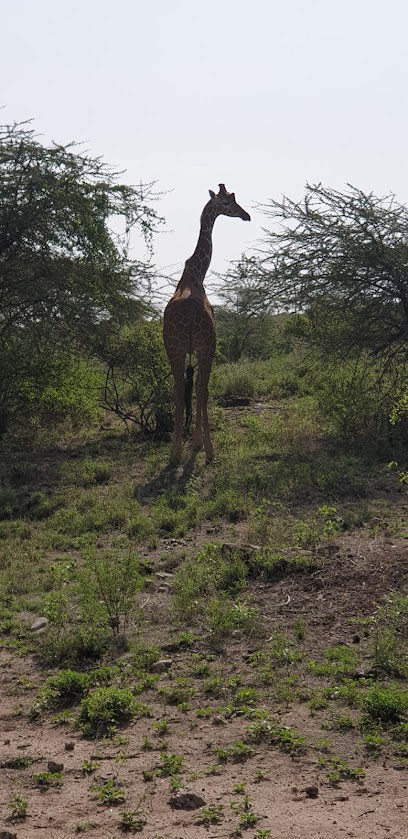
Buffalo Springs National Reserve
11.7 km
Experience the breathtaking wildlife and stunning landscapes of Buffalo Springs National Reserve in Kenya, a paradise for nature lovers and adventure seekers.
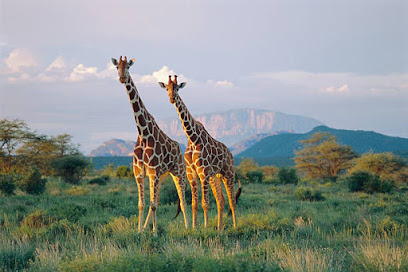
Samburu National Reserve Gate
12.0 km
Experience the enchanting wildlife and stunning landscapes of Samburu National Reserve, a true gem in the heart of Kenya's wilderness.

Nashipa Eco Camp
12.8 km
Discover Nashipa Eco Camp, where nature meets sustainability for an unforgettable camping experience in Archers Post, Kenya.

Kalama Community Conservancy
13.5 km
Discover the enchanting landscapes and rich biodiversity of Kalama Community Conservancy, a true gem of Kenya's nature preserves.

Samburu
13.7 km
Explore Samburu, Kenya's breathtaking tourist attraction brimming with wildlife, rich culture, and stunning landscapes for an unforgettable adventure.

Rapa Eloimisi
13.9 km
Explore the stunning trails and cultural richness of Rapa Eloimisi, a top hiking destination in Samburu, Kenya, offering breathtaking views and vibrant nature.

Kalama Resource Centre
14.4 km
Explore the Kalama Resource Centre in Archers Post for a unique blend of nature and culture in the heart of Kenya's wilderness.

Essential places to dine
Samburu Northern Springs, Archer's Post, Samburu, Kenya
14.7 km
Experience authentic Kenyan flavors at Samburu Northern Springs—your culinary haven in the wild heart of Samburu.

Sinteti Hotel
15.1 km
Discover authentic Kenyan cuisine at Sinteti Hotel in Archers Post—your gateway to Samburu and Shaba National Reserves.

Archers Klub Haus
15.3 km
Discover vibrant nightlife at Archers Klub Haus - your go-to restaurant and sports bar in Archers Post offering delicious cuisine and entertainment.
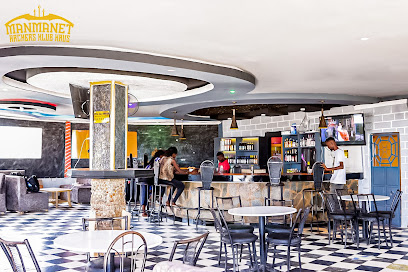
Iman Restaurant
29.6 km
Experience the rich flavors of Halal cuisine at Iman Restaurant in Isiolo – your perfect dining stop along the highway.

The 19 Coins Hotel
29.7 km
Discover comfort and exquisite dining at The 19 Coins Hotel in Isiolo - where every meal is a celebration of flavors.

Royal Acacia Hotel
34.7 km
Discover delightful dining at Royal Acacia Hotel in Isiolo - where local flavors meet warm hospitality in an enchanting setting.
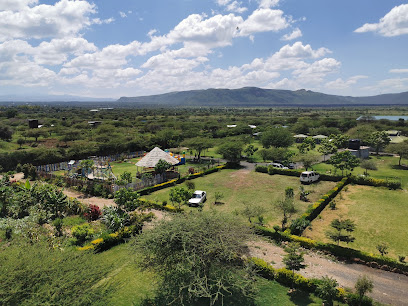
ANELE GARDEN RESTAURANT
52.6 km
Savor authentic African cuisine in a serene garden setting at Anele Garden Restaurant in Maua, Kenya.
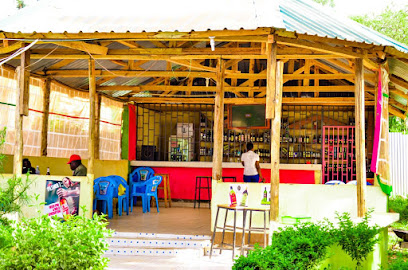
Entrecote Kisima Ltd
57.8 km
Discover the culinary treasures of Kenya at Entrecote Kisima Ltd - where every meal is a flavorful adventure amidst stunning views.
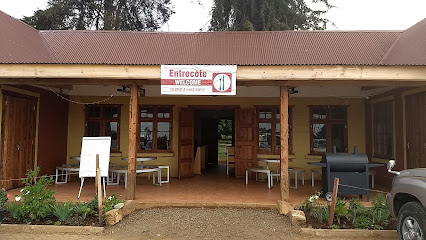
Co-op Kwa Jirani Noah Kiprotich Busienei
62.9 km
Experience authentic Kenyan flavors at Co-op Kwa Jirani Noah Kiprotich Busienei in Mosoriot, where every dish tells a story.

Lolldaiga House
62.9 km
Discover unparalleled luxury amidst breathtaking landscapes at Lolldaiga House in Nanyuki - your gateway to Kenya's stunning wilderness.

Mt kenya leisure cave
63.0 km
Experience exquisite dining at Mt Kenya Leisure Cave amidst breathtaking landscapes and local flavors.
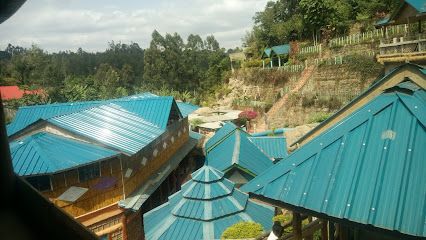
Mount Kenya Creameries Milk Center
63.6 km
Discover authentic Kenyan flavors at Mount Kenya Creameries Milk Center - where tradition meets taste in every delightful bite.

Kilimanjaro Restaurant
64.0 km
Experience the rich flavors of traditional barbecue at Kilimanjaro Restaurant in Meru—where every bite tells a story.

Gitwiki Gardens
64.3 km
Experience serene dining at Gitwiki Gardens in Meru; where delicious meals meet lush landscapes.

Jovian Guest House
66.7 km
Discover exquisite local flavors in a serene setting at Jovian Guest House in Timau.
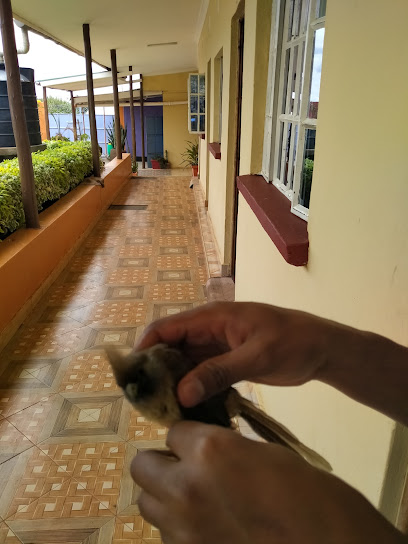
Markets, malls and hidden boutiques
Kiltamany Dispensary
7.3 km
Explore Kiltamany Dispensary, a vital healthcare center providing essential medical services for locals and travelers in beautiful Kenya.

Richrose shop building
13.5 km
Experience local shopping at the Richrose Shop Building, a charming general store on Dudi Urewe Road in Dudi, Kenya.

Sokomart Mbiri
14.7 km
Discover authentic Chinese ingredients and cultural treasures at Sokomart Mbiri, the leading Chinese supermarket in Mutithi Kirinyaga.

Naaingura Business Center
14.7 km
Experience the vibrant culture and modern shopping at Naaingura Business Center in Archers Post, a must-visit destination for every traveler.

Huruma Gen Shop & Grocery
14.7 km
Explore the authentic tastes of Kenya at Huruma Gen Shop & Grocery, your go-to destination for local produce and culinary delights.

Imani Hardware
14.7 km
Imani Hardware: Your Go-To Hardware Store in Archers Post, Kenya for Every Traveler's Needs

Generations shop -Achers post
14.7 km
Experience local culture and flavors at Generations Shop in Archers Post, a vibrant grocery store showcasing fresh produce and authentic Kenyan delicacies.

Vision Shop
14.7 km
Discover stylish eyewear and expert eye care at Vision Shop in Archers Post, your trusted optician for quality optical services.

Doreen general shop
14.7 km
Discover the charm of Doreen General Shop in Archers Post, where local culture meets convenience and unique souvenirs await every traveler.

MIAMI BAKERIES
14.9 km
Explore the delightful flavors of Miami Bakeries in Archers Post, where fresh pastries and artisanal bread create a memorable culinary experience.
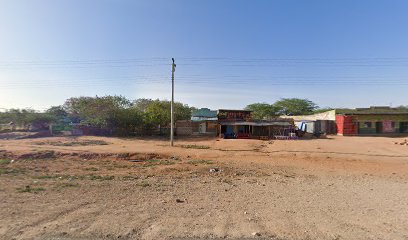
Wao
14.9 km
Explore Wao Shopping Mall in Archers Post - a vibrant hub for shopping, dining, and local culture, perfect for every tourist's itinerary.

Wonderprice Hardware
14.9 km
Explore Wonderprice Hardware in Archers Post for all your DIY needs, offering a wide selection of tools and exceptional customer service.

Archers Mid-Town Hardware & Electrical Store
15.0 km
Explore Archers Post through its local hardware store, a vital hub for DIY enthusiasts and community engagement.

Naropili Ushanga Clothes / Design
15.1 km
Uncover the essence of local fashion at Naropili Ushanga Clothes, where tradition meets modern design in Archers Post.

GIDDY FASHIONS
15.2 km
Discover Giddy Fashions in Archers Post - a stylish clothing store showcasing local designs and vibrant fashion for every taste.

Essential bars & hidden hideouts
View point bad
4.0 km
Discover stunning vistas and a relaxed atmosphere at View Point Bad, the perfect bar for enjoying Kenya's natural beauty while sipping your favorite drink.

Soroi Larsens Camp
6.3 km
Discover family-friendly comfort and the beauty of nature at Soroi Larsens Camp, your ultimate lodge getaway in Umoja, Kenya.
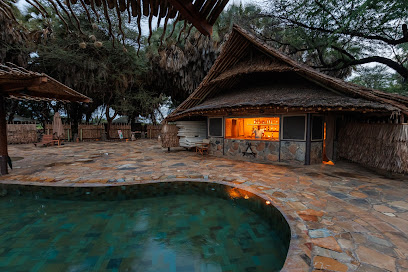
County Inn Hotel
14.1 km
Discover the authentic flavors of Kenya at County Inn Hotel, a premier dining destination in the heart of Samburu.

THE MOONRAKERS PUB
14.6 km
Discover The Moonrakers Pub in Archers Post, where local culture meets refreshing drinks in a vibrant atmosphere for every traveler.
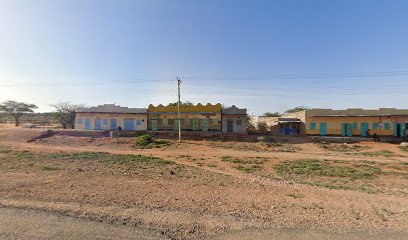
Maxland Bar
14.7 km
Discover the vibrant atmosphere of Maxland Bar in Archers Post, where refreshing drinks and local culture come together for an unforgettable experience.

Oasis Bar And Lodgings
15.2 km
Discover the Oasis Bar and Lodgings in Archers Post - a perfect blend of relaxation, local culture, and vibrant nightlife.

Sundowner Bar and Lodgings
15.2 km
Discover the perfect blend of relaxation and local culture at Sundowner Bar and Lodgings in Archers Post, Kenya.

ABEL MUTUVA
29.2 km
Experience the vibrant flavors of Kenyan cuisine at Abel Mutuva, a top grill destination in Isiolo, perfect for food lovers seeking authentic tastes.

Safari Bar Grill & Butchery
29.7 km
Experience the best of Isiolo's culinary scene at Safari Bar Grill & Butchery, where flavor meets fun in a vibrant setting.

Bella Lounge Isiolo
30.5 km
Discover the lively nightlife at Bella Lounge Isiolo, where great drinks, music, and a vibrant atmosphere await every visitor.

Sweet watters bar and restaurant
31.1 km
Experience the rich flavors of Kenyan cuisine at Sweet Watters Bar and Restaurant, Isiolo's top spot for grilled delights and local hospitality.

Dance Pub
47.5 km
Discover the vibrant nightlife at Dance Pub, where music, dancing, and an electric atmosphere come together for an unforgettable experience in Kenya.
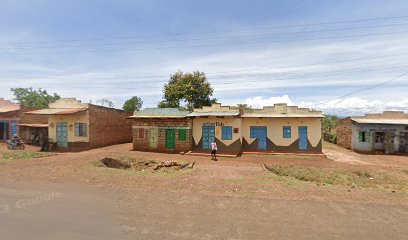
Untamed Resort ~ Subuiga
51.9 km
Discover the lively atmosphere and exquisite beverages at Untamed Resort ~ Subuiga, a must-visit bar in the heart of Kenya.
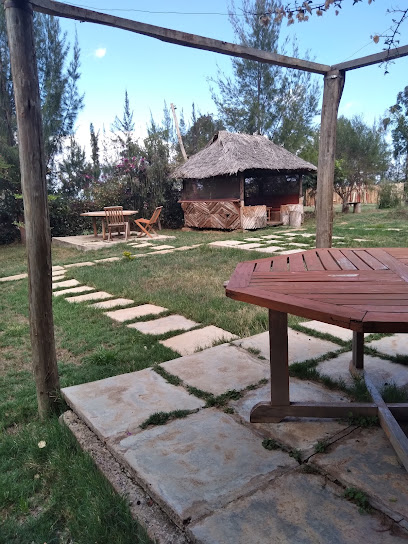
Smiling Panda Valley Pub
52.5 km
Discover the lively Smiling Panda Valley Pub in Muriri, offering a perfect blend of local culture, refreshing drinks, and vibrant nightlife.

Kinoria Pub
52.5 km
Discover the vibrant nightlife at Kinoria Pub in Ruiri Town, a cozy bar offering delightful drinks and a lively atmosphere.




